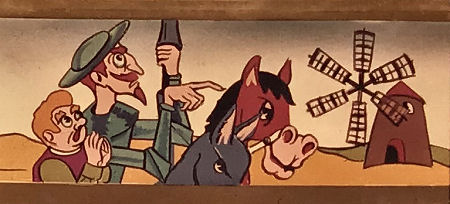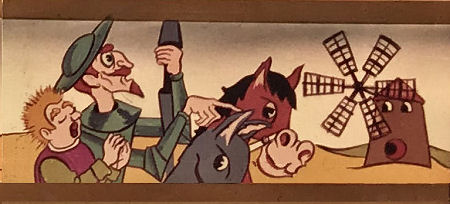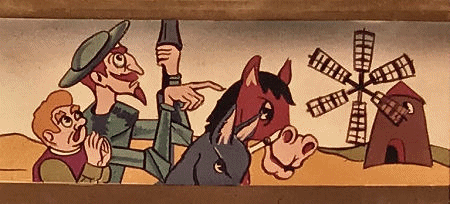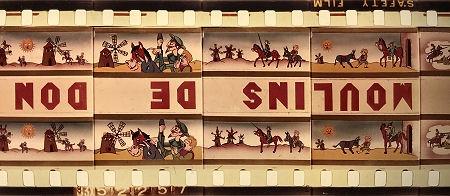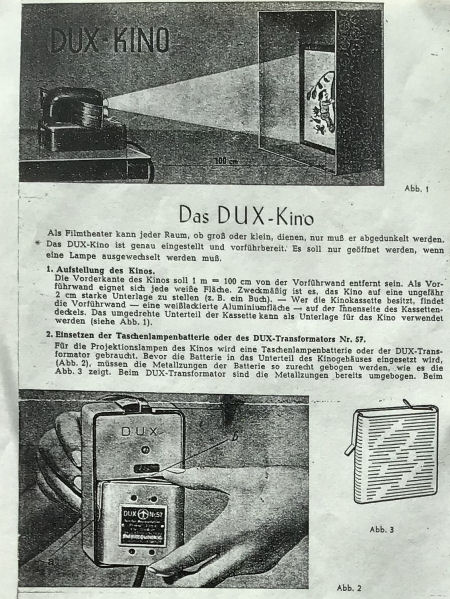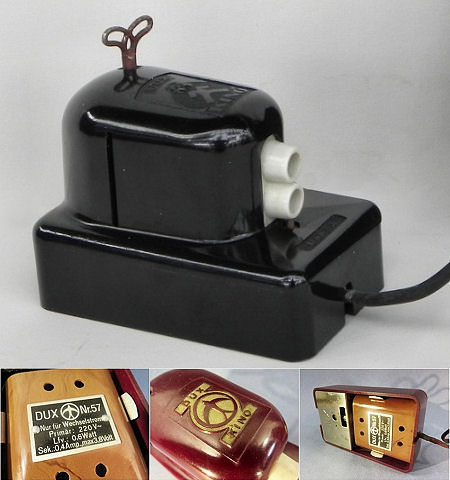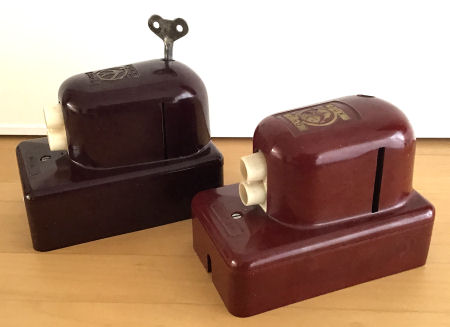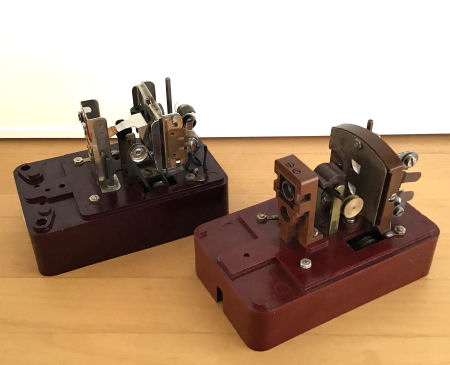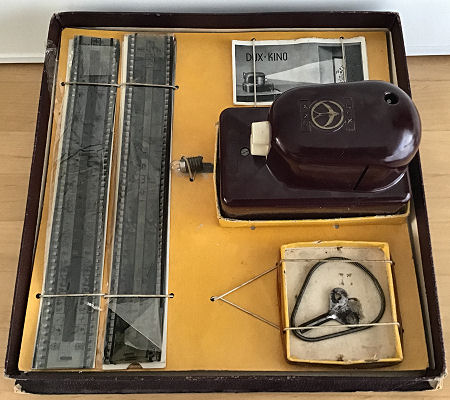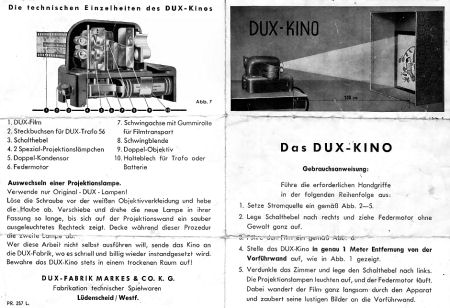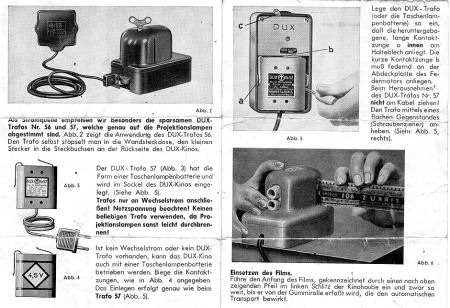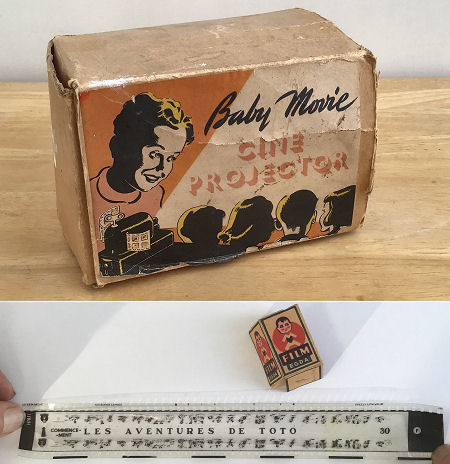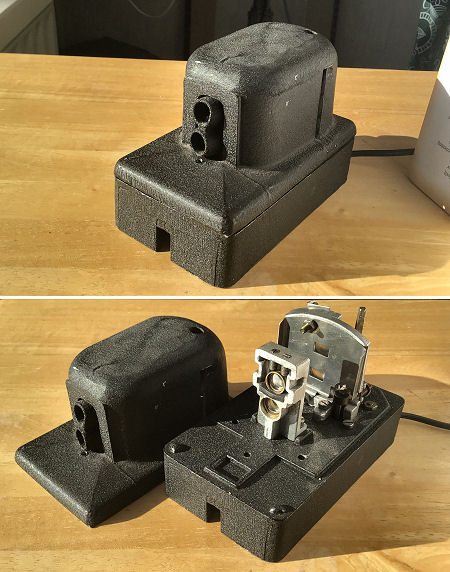|
|
Dual lens alternating image projectors. part 1. |
| Alternating image projectors arrived in France in the early 1930s by exploiting the Spanish NIC license for the construction of the French NIC followed shortly thereafter by NIC 2. In 1950, Ciné Egda whose production had been taken over by the Sélic company produces the Ciné Sélic MM, then the Ciné Selic 3 and a heavy metal version the Midi Ciné in 1953. | |
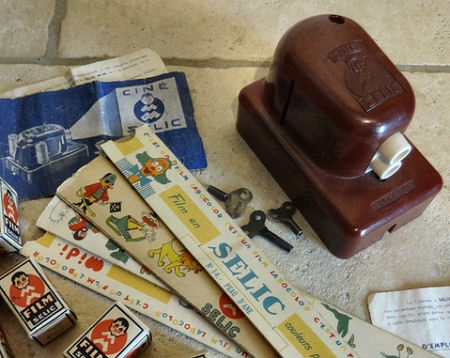 |
Ciné Selic model 3. Bakelite body, two objectives for film projection with two rows of images, film holder for 35 mm film, spring motor; location for an electric battery; two small electric bulbs. The Ciné Selic 3 was delivered in two colours, red-brown and green. Length: 13 cm, width: 7.5 cm, height: 8.5 cm. Objective 1 cm in diameter, x 2. Manufacturer: Egda Cinema Marseille, 44 rue Saint-Sébastien. |
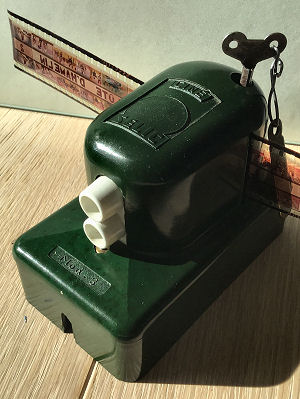 |
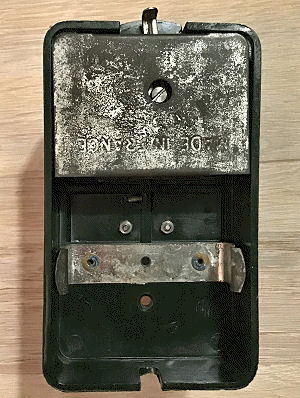 |
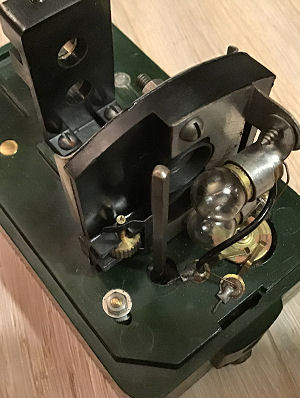 |
 |
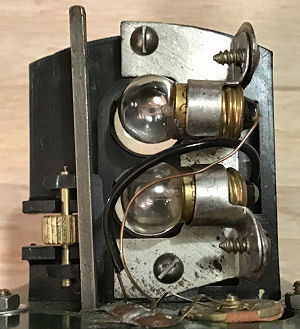 |
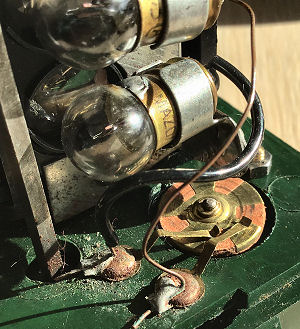 |
 These
photos show clearly how the projection of the images takes place by means of a
rotating sliding contact by which in turn one small bulb is switched on while the
other one turns off. This sliding contact is driven by a
spring motor, which also ensures film transport. These
photos show clearly how the projection of the images takes place by means of a
rotating sliding contact by which in turn one small bulb is switched on while the
other one turns off. This sliding contact is driven by a
spring motor, which also ensures film transport. |
||
 |
 |
Instruction manual. The Sélic 3 instruction manual deals with the commercial approach and how the product was offered to the public: |
NIC Cine Projector Model 500. |
|
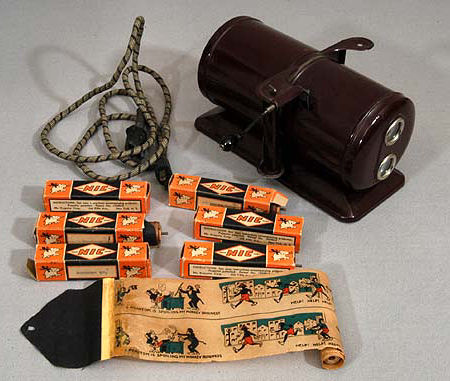 |
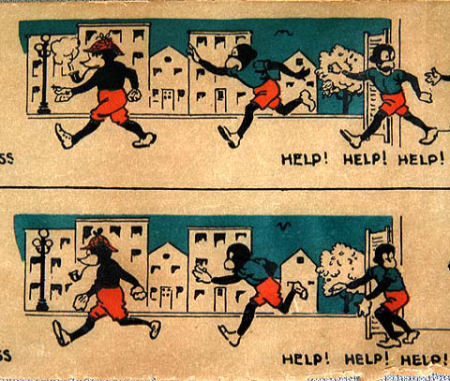 |
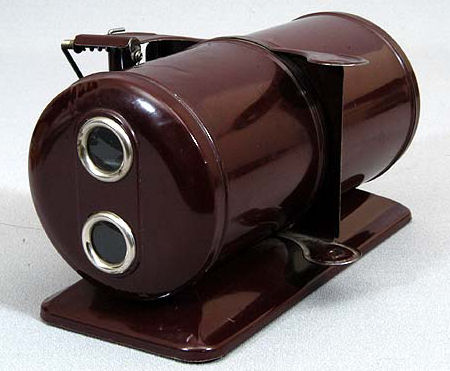 |
 |
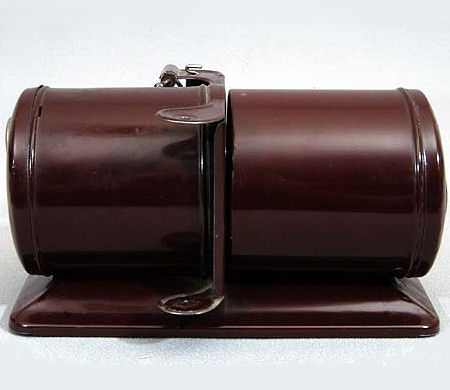 |
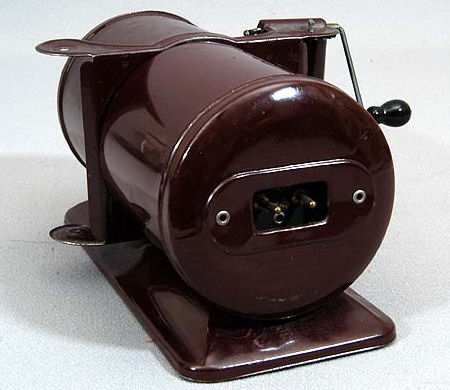 |
| This vintage tin
toy cine projector is made by NIC Projector Corp, New York. It is sometimes
referred to as a "kinescope" and has a patent date of 1929. There is a crank on the right side of the projector connected to a geared-lever mechanism, that operates the shutter, pulls the film through then rolls it up. There are two lenses, the shutter moves up and down covering one lens at a time as the film advances. The back comes off to change the light bulb. This metal projector measures approx. 9 x 15 x 8 inches (23 x 38 x 20 cm). The films are on a rice type paper with the images printed on them. They all have the NIC Trade Mark and are especially made for this projector. |
|
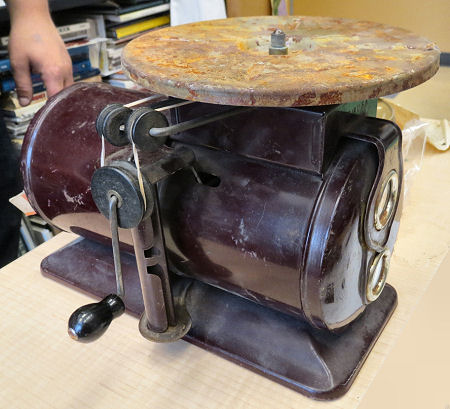 |
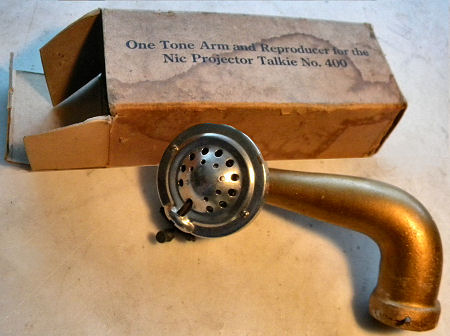 This Kinescope could be expanded with a gramophone. The device on the photo on the left is incomplete. Above the tone arm for this projector. |
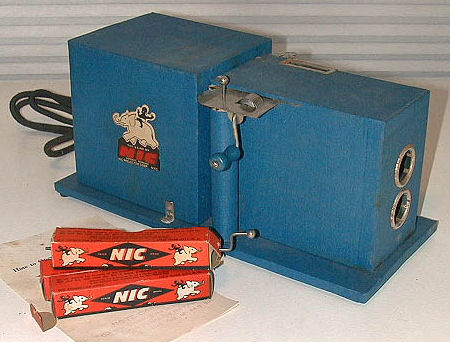 Two other models made by NIC. |
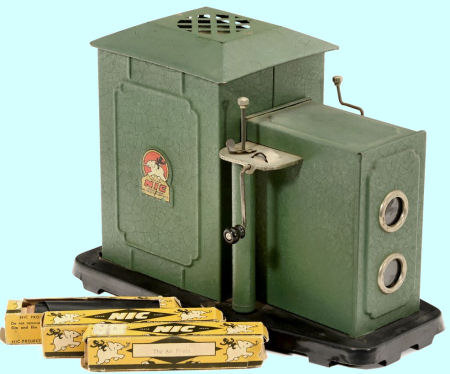 |
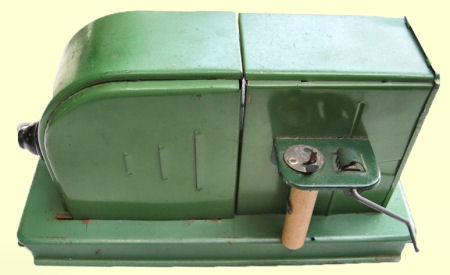 This NIC projector works with a standard 220 V light bulb. It uses the same paper rolls as the other NIC models. Here, too, the illusion of movement is achieved by alternately projecting two images. The projector is made of tin and was available in various colours, like green and blue. Made by the Nic Projector Corp. N.Y.C., USA in the 50s. 21 cm tall and 28 cm long. |
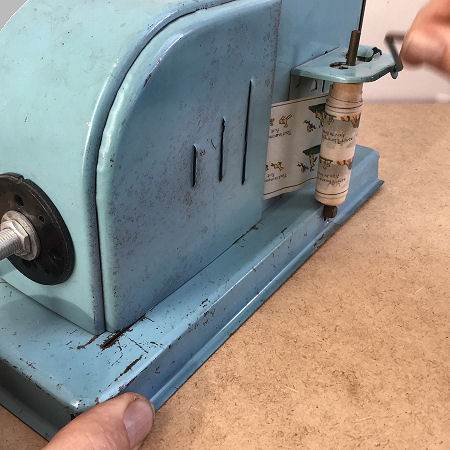 |
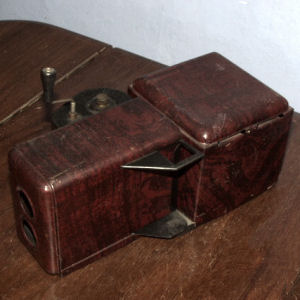 |
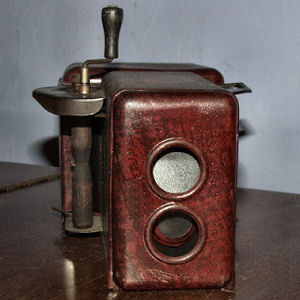 |
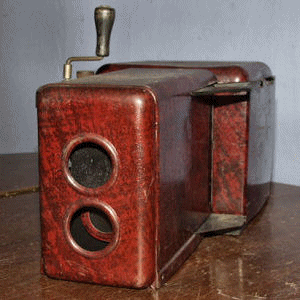 |
|
NIC Movie-Jector Projector with a grain painted tin body. When the handle is rotated the upper lens or the lower lens is alternately closed by a shutter. This continues as long as the handle is turned. |
||
|
The Movie-Jector could be expanded with a hand-cranked
record player that was placed on top of the basic model. The Talkie-Jector could
play small gramophone records with music and spoken word to accompany the
projected images. The pictures were 7" in diameter and had brightly coloured
images. The quality of the gramophone record is quite good when played on a conventional gramophone. Unfortunately, the turntable attached to the Talkie-Jector is extremely spotty in speed and minimal in reliability, with the horn being far too short to produce decent volume or acceptable bass response. The result is that speech is barely intelligible, while the musical background is completely overshadowed by the disturbing sounds. According to advertisements, the composer of the music on these recordings is none other than Irving Berlin. You might wonder how a composer of this stature could get involved in such a rather clumsy project? |
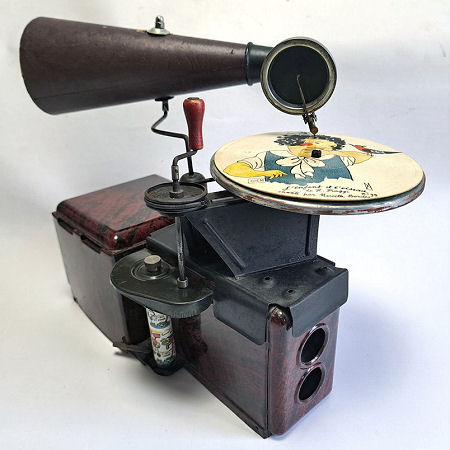 |
 |
 |
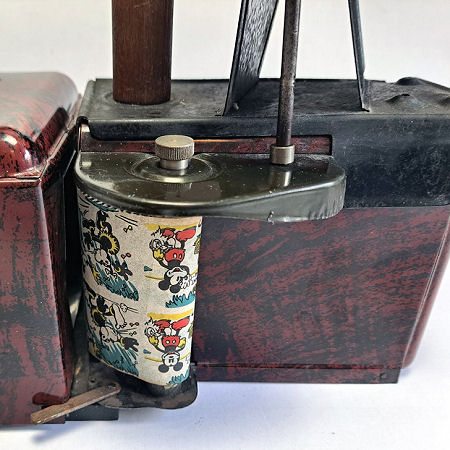 |
 |
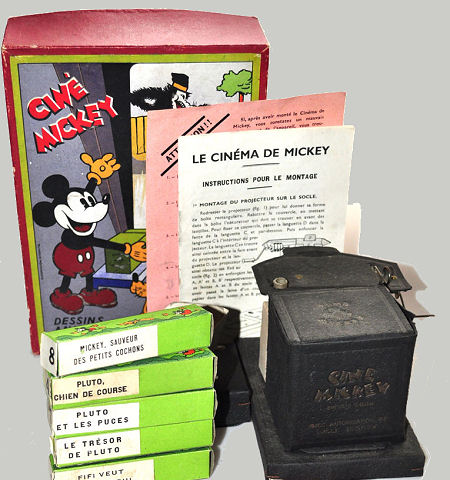 |
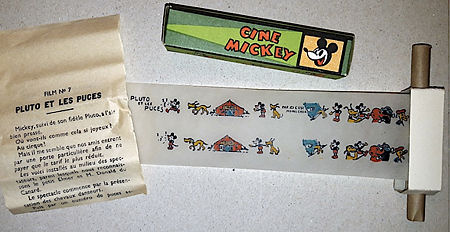 The Ciné Mickey works with the same paper films as the NIC projectors. More about this small projector at 'Battery powered magic lanterns'. |
|
|
More of this
..... |
| |
©1997-2024 'de Luikerwaal' All rights reserved. Last update: 14-08-2024. |
|


